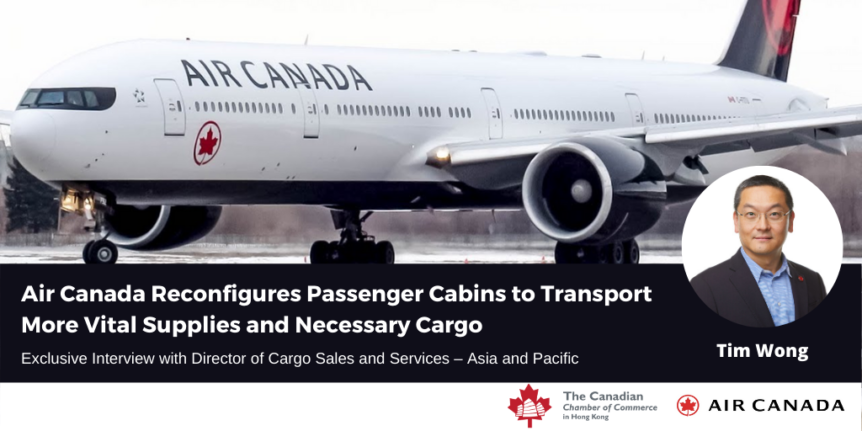Air Canada Reconfigures Passenger Cabins on Three Aircraft to Transport More Vital Supplies and Necessary Cargo
Exclusive Interview with Tim Wong – Director of Cargo Sales and Services, Asia and Pacific
–
Air Canada announced on April 14, 2020 that it is reconfiguring the cabins of three of its Boeing 777-300ER aircraft to transport cargo in the passenger cabin, doubling cargo capacity. The reconfigured aircraft can carry 89.63 tonnes, the equivalent of up to 9 million medical masks. We had the wonderful opportunity to interview Tim Wong, Director of Cargo Sales and Services – Asia and Pacific of Air Canada, to learn more about this process:
Not only has tourism and travel decreased substantially as a result of the COVID-19 pandemic, but businesses have had to significantly reduce overhead costs. How did Air Canada budget the reconfiguration of passenger cabins into cargo vessels?
Air Canada has remodelled 3 Boeing 777-300ER to accommodate light freight in their cabins by removing the passenger seats. Other than that, the cabins are intact, so these are not true freighter conversion. To achieve full conversion, the floor would need to be reinforced, the doors changed, pallet positioning systems would have to be installed on the floor, etc. The aircraft that were remodelled were schedule for cabin renovations. Air Canada used that opportunity to remove the seats to respond to the demand for PPEs that are required in Canada. We plan to have several more of our B777-300 to go through the same remodelling process in the coming months.
How did Air Canada pivot its standard business procedures to adapt to the current situation? What were the internal processes to accomplish this?
Business transformation and teamwork are two key factors in order to allow Air Canada Cargo to adapt effectively and efficiently to the current situation. The remodelling of our aircraft as mentioned earlier is prime example. It is a joint effort among our various departments spanning from Maintenance, Procedure and Safety, Operations, to Sales to make it happen. We are very proud of them who are willing to try new approach to meet business demands.
Is Air Canada receiving any support from the Canadian government, or other governments, to help offset the costs of distributing medical supplies and other goods?
Air Canada’s role is to transport material for its customers and they can be freight forwarders or government agencies at commercial level. Our role in the supply chain is only to move the goods from one point to another. This distribution happens through other parties in the supply chain, including our freight forwarding customers and trucking companies.
After being awarded the Gold Air Cargo Excellence Award and now transporting vital medical supplies, has Air Canada noticed other airlines following its lead? What advice or best practices can Air Canada share with other airlines and/or industries to make this shift?
Almost half the world’s air freight is carried in the belly of passenger aircraft on commercial airlines. Transporting medical supplies is not a new venture for Air Canada Cargo, the freight division of Air Canada. These goods are typically transported by air cargo due to their time-sensitive nature. Pharmaceuticals and perishable products like fruits, vegetables, and seafood as well as electronics are other examples of goods that are transported in air cargo. Prior to the COVID-19 pandemic, Air Canada Cargo carried all these goods in the belly of its passenger flights. What has been notable is the airline’s ability to quickly adapt to the increased demand for air cargo capacity while operating a greatly reduced passenger schedule and allow cargo-only flights to operate on international routes. These are flights on passenger aircraft, with no passengers. In comes cases, the flights are operated on Boeing 777-300ER aircraft that the cabin has been remodelled to accommodate light cargo such as non-medical or surgical marks. The Air Cargo Excellence Award is given to airlines based on a survey about customer’s satisfaction with our service in 2019 and the early part of 2020. We are here to serve based on customers’ demand. We are also seeing many carriers who are doing the same in other parts of the world.
To read the full press release, please click here.





